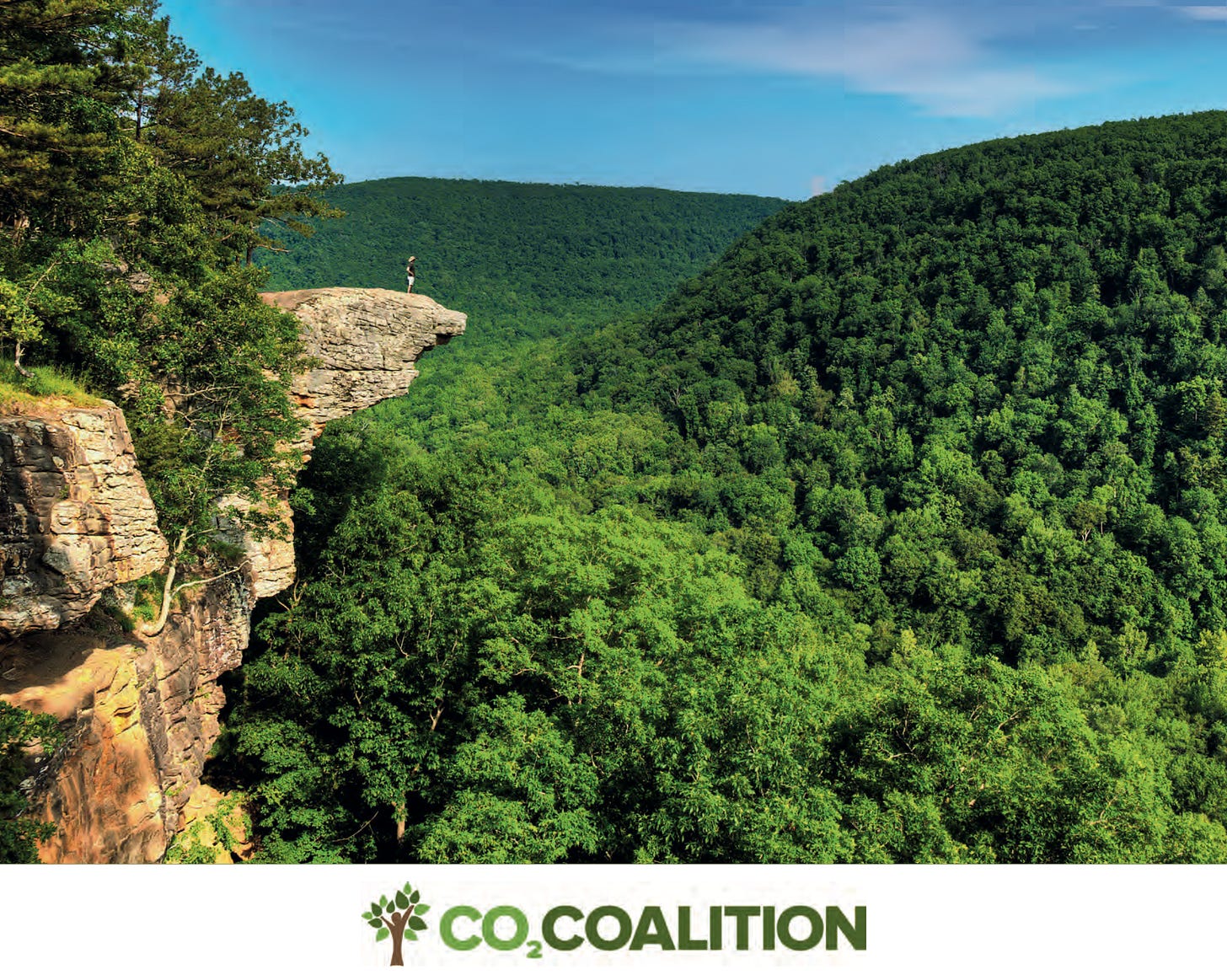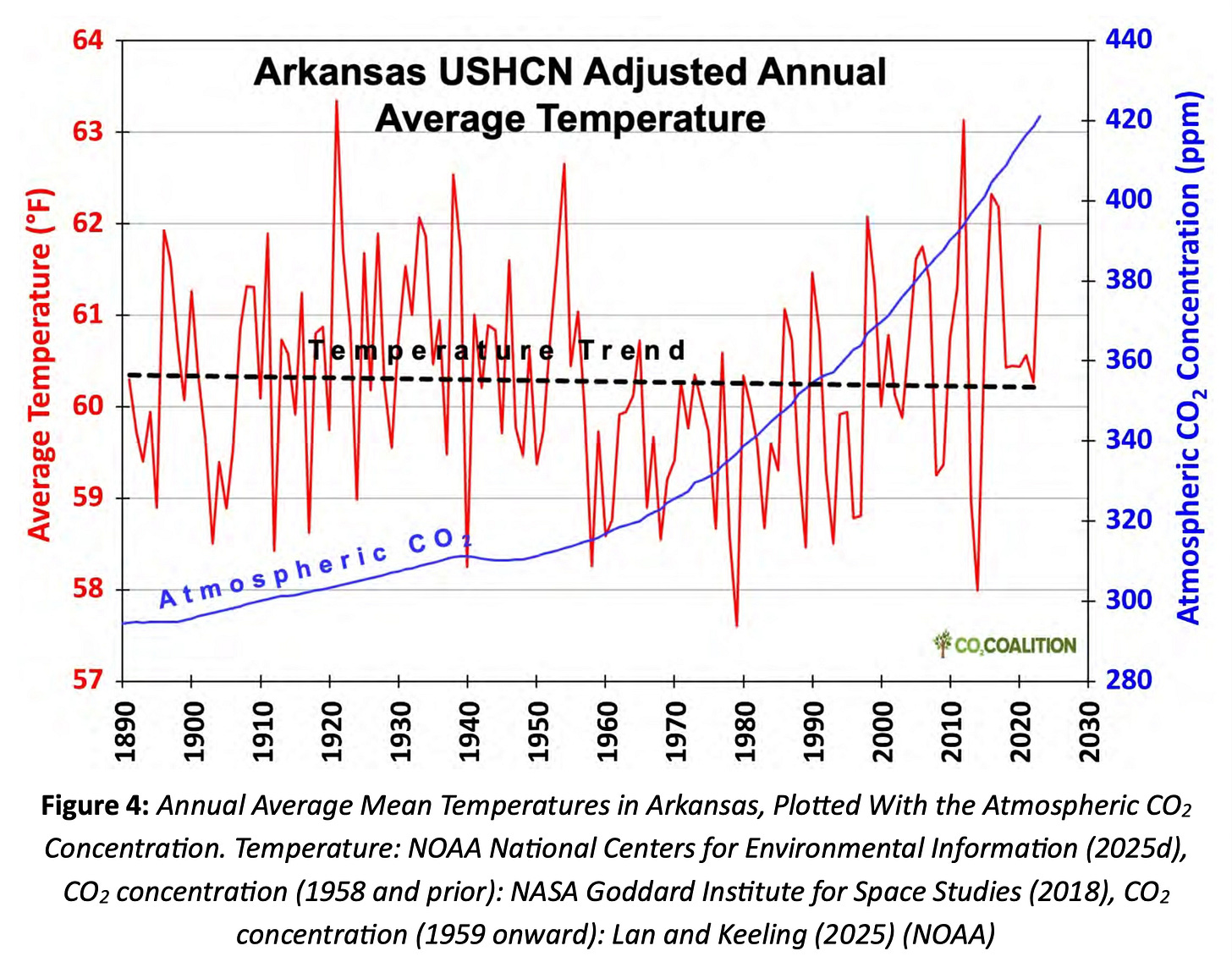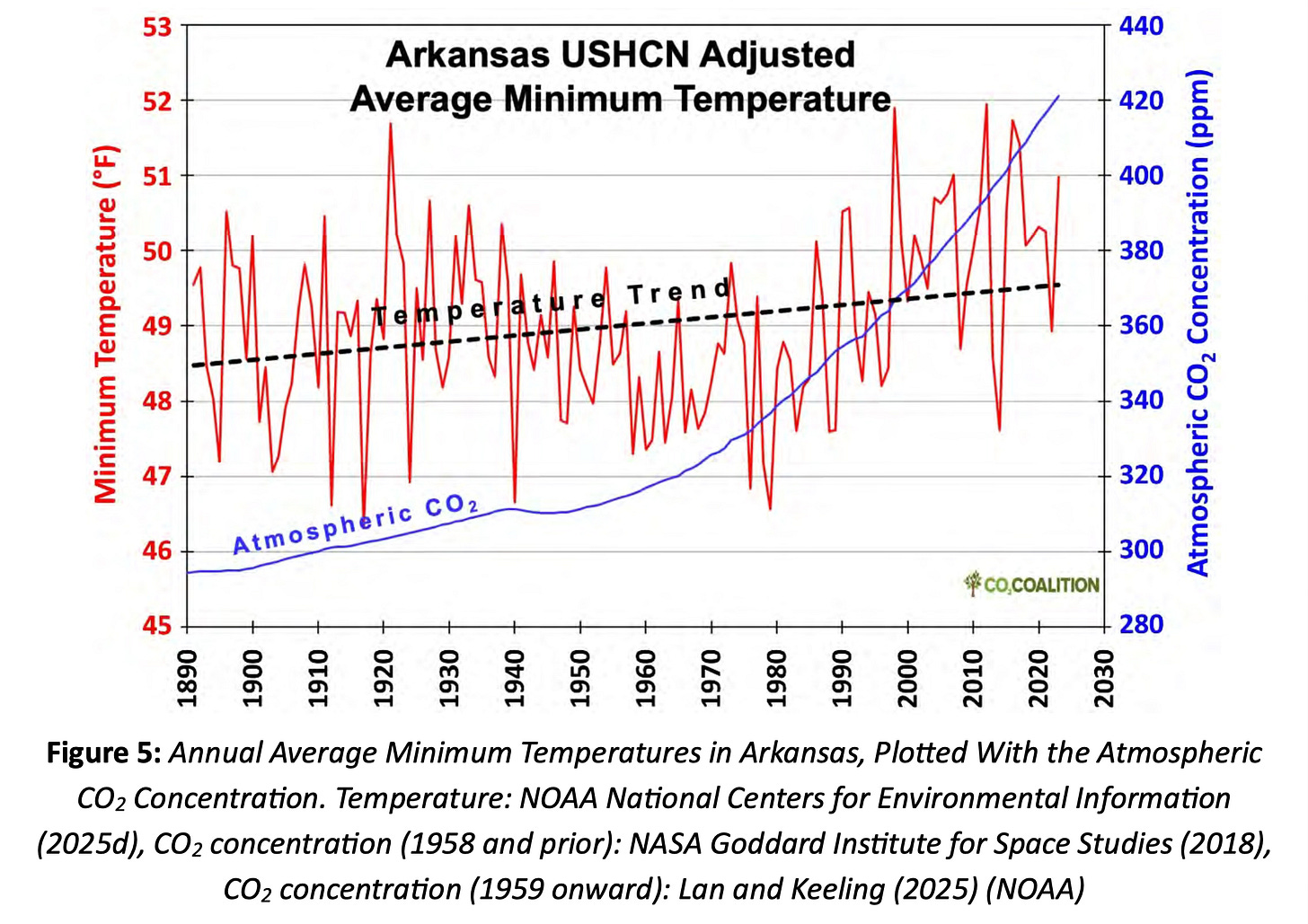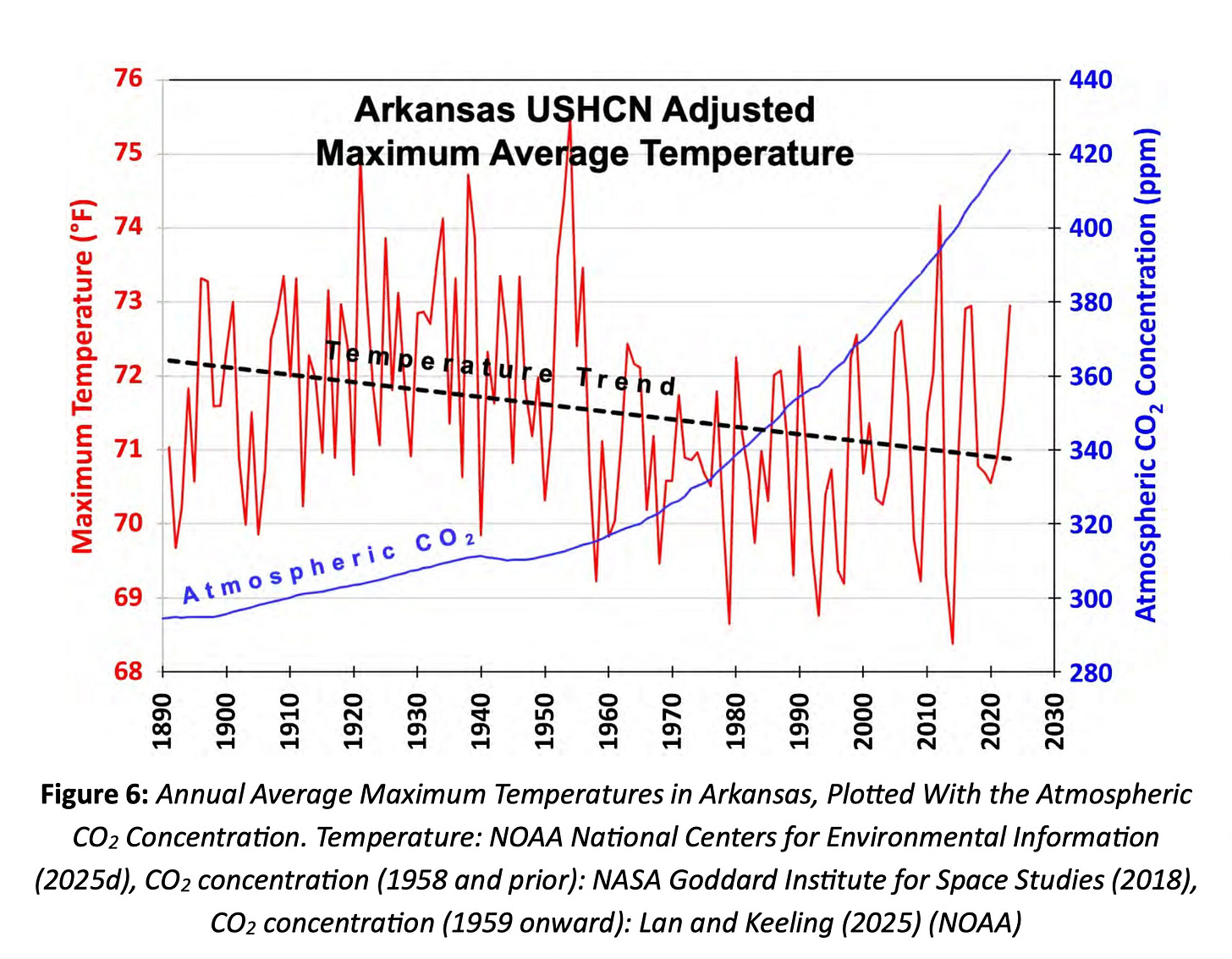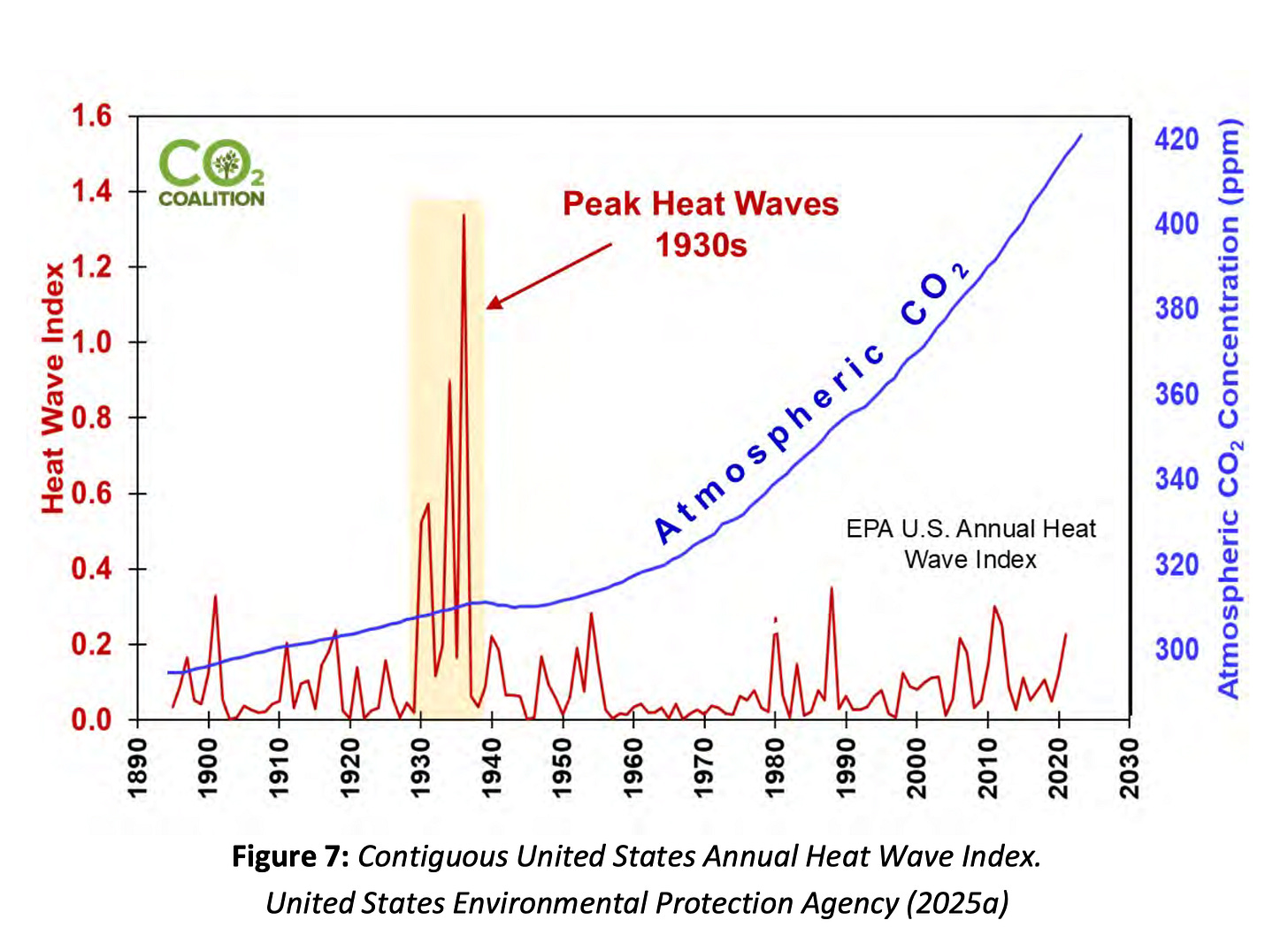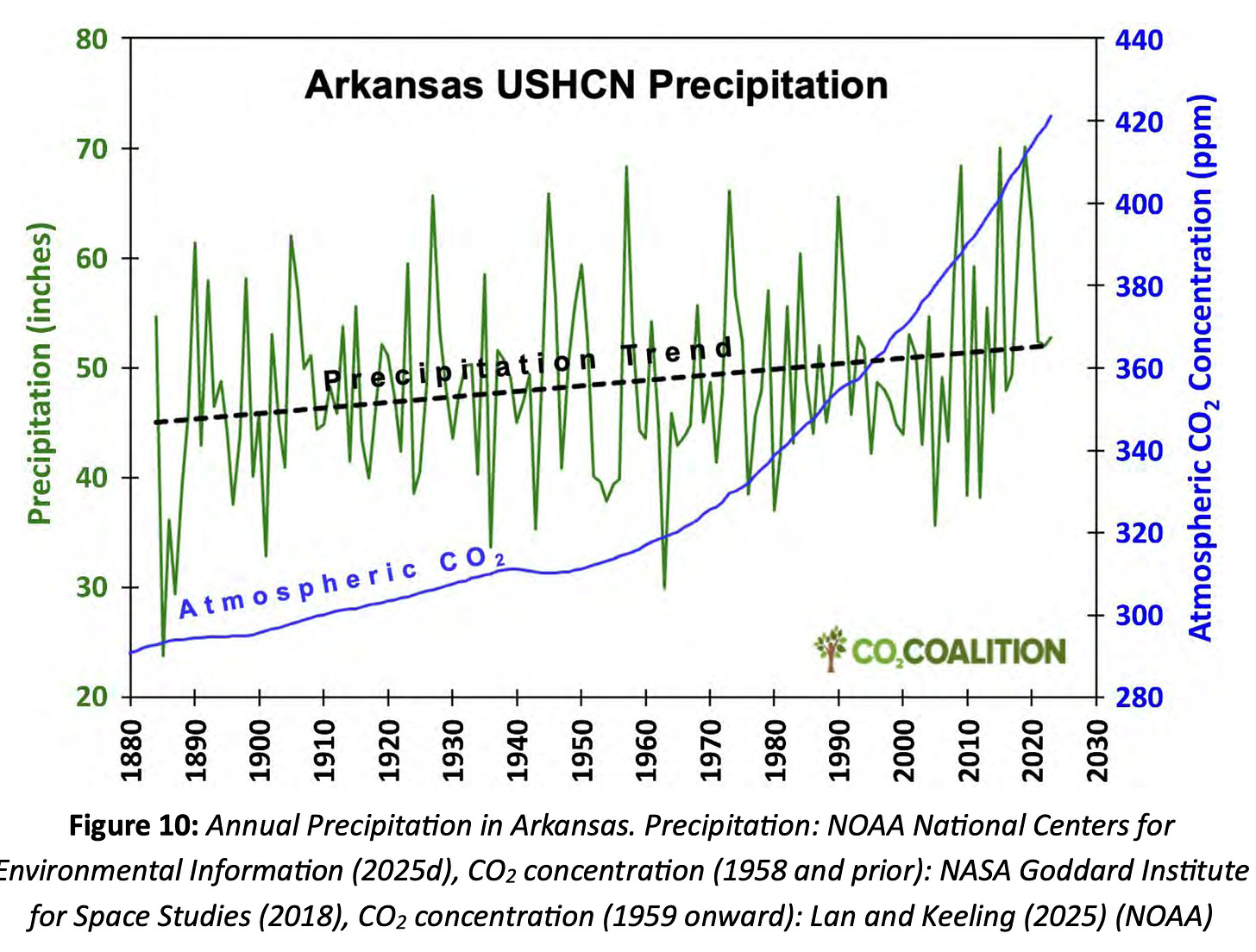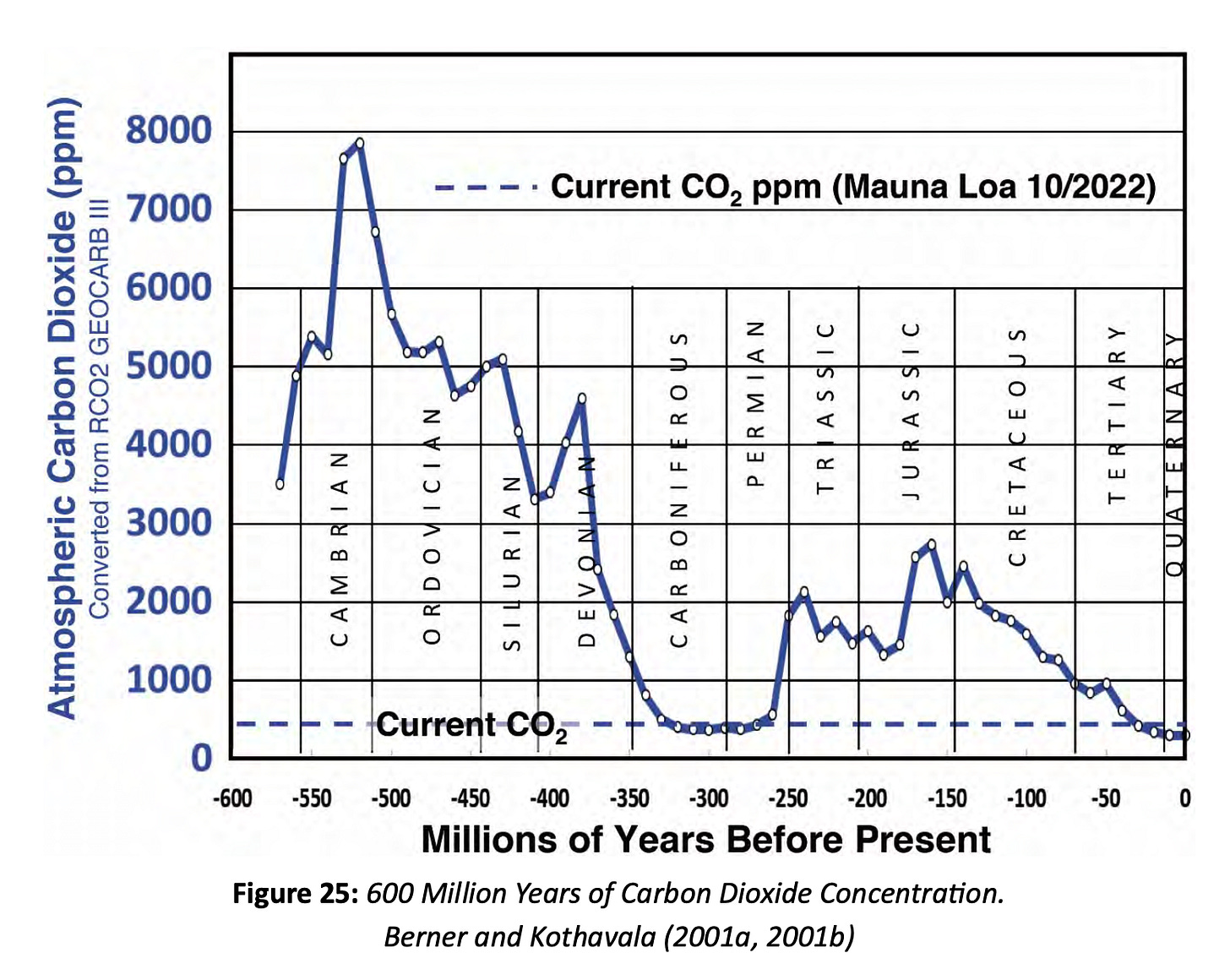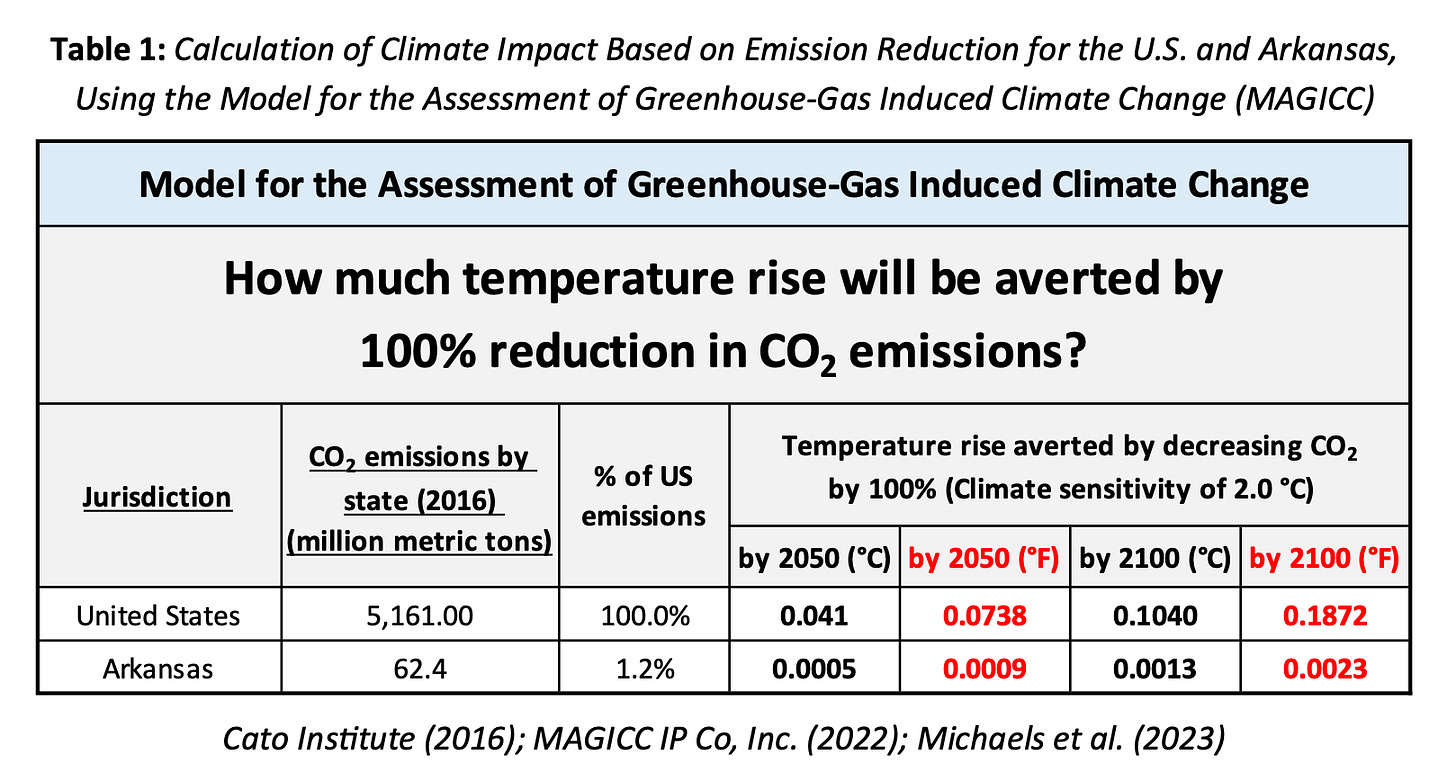The impact of climate change in Arkansas
Reviewing the latest report from the CO2Coalition undermining the climate catastrophe narrative
Introduction
I have followed the CO2Coalition for many years. In the UK the Global Warming Policy Foundation addresses the economic consequences of Net Zero policy. By contrast the CO2Coalition tackles climate science head-on. There is overlap in terms of both challenging policy making, but their emphasis is on hard science and data, and how it is misrepresented.
In their July 2025 paper Arkansas and Climate Change - No Warming. No Crisis. No Problem., they examine the scientific basis for claims of harmful climate-change-related impacts in Arkansas. Analysing official climate data sources they were surprised to find that heatwaves and maximum temperatures have declined. They concluded:
There is no evidence of a climate crisis in Arkansas. Rather, its citizens are benefiting from ecosystems that are thriving and flourishing.
This is just one state in the US and similar studies are required in other states. However, a significant geographic region like Arkansas bucking the supposed trend for climate catastrophe must be good news, not least for the Arkansans themselves!
My key takeaway is that we are spending trillions of dollars globally on Net Zero when evidence of an imminent catastrophe is scant and the result might be a physically unmeasurable drop in global temperature.
Key findings
I’ll highlight a few of the key charts since these paint a clear picture of what is really happening.
Average temperatures in Arkansas do not follow rises in atmospheric CO2
Their figure 4 chart shows a tiny drop in average temperature from about 15.72oC to 15.67oC, i.e. practically no change.
Minimum temperatures in Arkansas have warmed only modestly
The average daily low temperatures (usually at night) have warmed from 9.2oC to 9.72oC:
This combined with rising CO2 has increased crop yields across the state.
Maximum temperatures in Arkansas are in long term decline
They found that, similar to other states, very hot temperatures are in a long-term decline. This is confirmed by reviewing the percentage of days above 90°F or about 32oC:
The temperature trend shows a decline from about 22.3oC to 21.6oC, a negative correlation between extremely hot days and atmospheric CO2 levels.
Extreme weather events show no correlation
Again, they found no correlation of extreme weather with rises in atmospheric CO2 levels:
Drought is not increasing
Contrary to the expected picture, they found that rainfall has increased as atmospheric CO2 increased:
That higher temperatures might lead to more ocean evaporation and subsequently more rainfall, should not be surprising. Just look at the tropics.
Other results
The paper contains many other charts and analyses which show:
No trends in strong tornadoes but decreasing injuries and deaths due to such tornadoes
No trend in hurricane frequency
No trends in flooding
Downward trends in wildfires (which may be partly explained by increasing precipitation)
The paper also highlights how the world is getting greener. According to NASA, CO2 increases explain about 70% of the greening. It goes on to relate this to Arkansas:
The state has experienced a marked increase in the density and extent of forest and woodland ecosystems, concurrent with a reduction in exposed soil surfaces and degraded grassland habitats. In short, unhealthy farmlands became healthy and forests became larger and denser.
They note that Arkansas forestry acreage increased from about 17.3m acres in 1978 to about 18.9m acres in 2022. They relate this to global increases in agricultural production which has far outstripped rapid rises in global population. They emphasise the vital role of CO2 in this transformation.
In fact every crop examined, showed rapidly rising yields. You might argue that this cannot continue, but we have to bear in mind that the global population is forecast to plateau at around 10.3 billion in the mid-2080s then gradually decline. Therefore, technological development combined with rising CO2 levels should means that we never have a problem in feeding the world’s population (uneven politics and economic development aside).
CO2 over geological periods
Another key chart to highlight is this one which demonstrates that the current CO2 level is near an historic low:
This is a great chart to bookmark. Climate alarmists, propped up by the mainstream media, would have you believe that CO2 levels have never been higher!
The impact of climate action?
One of the key questions to ask is: What will happen to global temperature if we hit Net Zero? It turns out that there is a model which can answer this question. The authors used this to look at what Arkansas and the US as a whole could achieve:
I have previously calculated the figure for the UK and found it so small that it looked like a rounding error. What this paper shows is that even if the US got to Net Zero by 2050 it might reduce global temperature by only 4 hundredths of a degree centigrade!
To be clear, this model is used by scientists contributing to IPCC reports. It is not a sceptics’ tool, somehow skewed to minimise the impact of CO2 reductions.
Conclusion
This is an important paper providing a comprehensive look at long term climate data in Arkansas. It compares this data with real-world outcomes such as crop yields and weather related disasters. It shows that there are no concerning correlations with rising atmospheric CO2 levels. Incidentally, it does sound like Arkansas could be a nice place to live!
As a key takeaway, we are spending trillions of dollars globally on Net Zero when evidence of an imminent catastrophe is scant and the result might be a physically unmeasurable drop in global temperature. This does not sound like value for money to me, particularly when it comes to paying our monthly energy bills which are only going in one direction.
Disclaimer
This review was not sponsored by the CO2Coalition and reflects my personal views.


